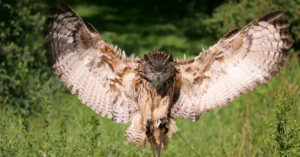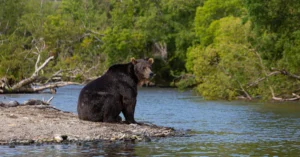Observing animals in their natural habitats is cherished by many. Opting for Guided Wildlife Watching tours led by experts ensures insightful experiences. Alternatively, some prefer independent exploration, each approach having merits and drawbacks.
Guided wildlife watching involves tours led by knowledgeable guides who provide insights into animal behavior, ecosystem dynamics, and conservation efforts. These guides ensure safety and enhance the educational value of the expedition, making it a preferred choice for many. On the other hand, self-guided wildlife watching offers freedom and flexibility. It allows adventurers to explore at their own pace and according to their own interests.
However, it demands thorough preparation and a good understanding of the environment to ensure both personal safety and the protection of wildlife. This blog aims to delve deep into these two approaches, discussing their pros and cons and providing you with essential factors to consider before making your choice.
Why Guided Tours Matter In Wildlife Watching

Guided wildlife watching is when you explore nature with a guide. The guide knows a lot about the animals and where to find them. They lead groups through parks or wildlife areas. This makes the trip safe and educational.
Guided tours are great for people who want to learn while exploring. The guide tells you about the animals’ lives and their homes, helping everyone understand and respect nature more. Guided tours are available in many places around the world. They offer a close look at wildlife, often without disturbing the animals’ natural habits. This is a responsible way to enjoy nature and learn a lot at the same time.
Importance Of Guided Tours For Wildlife Watching

Guided tours are invaluable for wildlife observation, combining expert knowledge with structured exploration to significantly enhance the experience. With trained guides, visitors gain deeper insights into the habits and habitats of various species, enriching their understanding of ecological systems and biodiversity. These tours also ensure safety, as guides are skilled in navigating through potentially dangerous terrains and managing encounters with wildlife.
Additionally, guided tours promote responsible wildlife tourism by adhering to conservation practices that minimize human impact on natural environments. This not only protects wildlife but also educates tourists on the importance of preserving these ecosystems for future generations.
Pros And Cons Of Guided Wildlife Watching
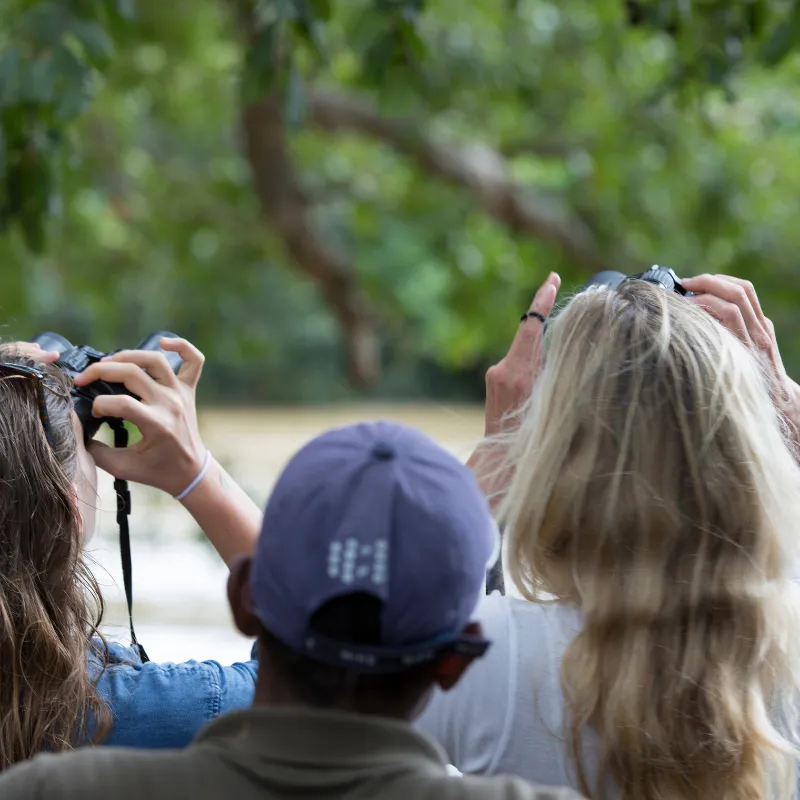
Guided wildlife watching combines adventure with education, offering a unique way to experience nature. Some pros and cons of Guided Wildlife watching are given below.
Pros
- Expert Guidance: Guides provide valuable information about animals and their habitats, enhancing your educational experience.
- Safety: With a guide, you navigate safely through potentially dangerous terrains and encounter wildlife responsibly.
- Enhanced Observation: Guides know where to find wildlife and how to approach them without causing disturbance, increasing your chances of seeing more species.
- Social Interaction: You get to share the experience with others, which can be especially enjoyable if you’re traveling alone.
Cons
- Cost: Guided tours can be more expensive than self-guided options due to the added value of expert guidance.
- Less Flexibility: Scheduled tours mean you must adhere to predetermined times and routes, which can limit personal exploration.
- Crowds: Depending on the tour, you may be part of a larger group, which can detract from the intimacy of the experience.
- Limited Personal Discovery: Being with a guide means you’re often following rather than discovering trails or wildlife on your own.
Types of Guided Wildlife Watching Tours
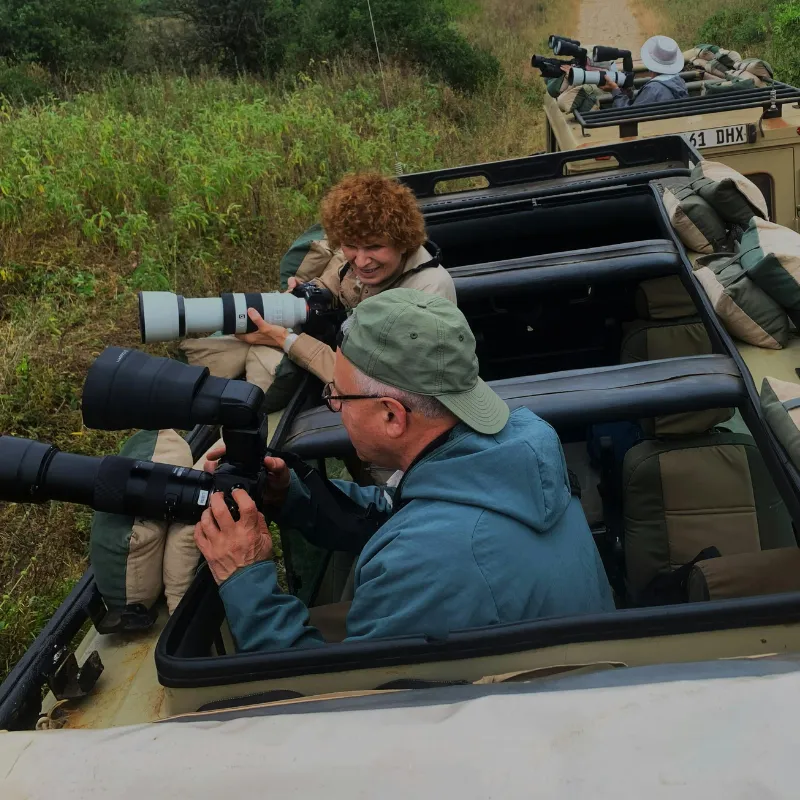
- Safari Tours: Experience the thrill of big game viewing in destinations like the African savannas. Safari tours allow you to observe majestic animals such as lions, elephants, and rhinos from the safety of a vehicle, often with the added excitement of close encounters.
- Bird Watching Tours: These tours focus on observing and identifying bird species in their natural habitats. Whether in wetlands, forests, or open fields, bird watching tours provide opportunities to see a wide variety of birds and learn about their behaviors and ecosystems.
- Marine Life Tours: Explore the rich biodiversity of coastal and underwater environments. Marine life tours, including snorkeling and diving excursions, offer close-up views of marine creatures like dolphins, whales, and colorful coral reef inhabitants.
- Nature Walks: Guided hikes through forests, mountains, and nature reserves allow for an immersive experience in diverse ecosystems. Nature walks highlight local flora and fauna, offering educational insights into the natural world around you.
Some Pros and Cons of Self-Guided Wildlife Watching
Self-guided wildlife watching allows you to explore nature freely, providing a personal and flexible experience. The pros and cons of self-guided wildlife watching are given below.
Pros
- Freedom and Flexibility: You set your own pace and schedule, choosing where and when to explore.
- Cost-Effective: Generally cheaper as there are no guide fees or structured tour costs.
- Quiet and Intimate: Without a group, your experience can be quieter and more intimate, allowing closer encounters with wildlife.
Cons
- Safety Risks: Without a guide, you might face higher safety risks, especially in unfamiliar or dangerous terrains.
- Missed Information: Without expert insights, you might overlook important wildlife behaviors or environmental facts.
- Preparation Required: Requires thorough preparation and research to ensure safety and maximize the likelihood of wildlife sightings.
What are the Main Differences Between Guided and Self-Guided Wildlife-Watching?
| Aspect | Guided Wildlife-Watching | Self-Guided Wildlife-Watching |
| Expertise | Led by knowledgeable guides | Relies on personal knowledge and research |
| Safety | Enhanced safety measures and protocols | Individual responsibility for safety |
| Cost | Generally more expensive due to guide fees | Usually more budget-friendly |
| Flexibility | Follows a structured schedule and itinerary | Flexible schedule and route |
| Wildlife Encounters | Higher chances of sightings due to guide expertise | Sightings depend on individual skill and luck |
| Group Dynamics | Often involves being part of a group | Typically a solo or small group experience |
| Learning Opportunities | Rich educational content provided by the guide | Self-driven learning and discovery |
| Permits and Access | Guides handle permits and restricted access areas | Must obtain permits and navigate access independently |
| Preparation Required | Less individual preparation needed | Extensive research and preparation are required |
How to Prepare Yourself for a Guided Wildlife-Watching Tour
- Research the Destination: Understand the climate, terrain, and wildlife of the area. This knowledge will help you appreciate the tour more deeply.
- Pack Appropriately: Bring suitable clothing for the weather, comfortable footwear for walking, and essential gear like binoculars and cameras.
- Physical Preparation: If your tour involves hiking or long walks, improve your stamina and fitness level to ensure comfort throughout the journey.
- Understand Tour Guidelines: Familiarize yourself with the tour’s rules and expectations, including any conservation practices you’re expected to follow.
What to Expect on a Guided Wildlife-Watching Tour

You can expect a deeply enriching and educational experience on a guided wildlife-watching tour. Accompanied by a knowledgeable guide, you’ll gain valuable insights into wildlife behavior and habitats, enhancing your overall understanding and appreciation of the natural world. The guide’s expertise ensures that you not only spot various animals but also learn about their roles within the ecosystem and the intricacies of their behaviors.
Wildlife encounters are a highlight, with opportunities to see a range of animals in their natural settings. Sightings can vary based on factors like weather, time of day, and animal activity, adding an element of unpredictability and excitement to the tour. Additionally, these tours offer significant educational opportunities, informing you about local conservation efforts and the ecological systems in place to protect these species.
Being part of a group also adds to the experience, fostering shared moments and interactions with fellow wildlife enthusiasts. This dynamic can make the tour more enjoyable and provide different perspectives and discussions, further enriching your wildlife-watching adventure.
Factors To Consider When Choosing Guided Wildlife Watching
- Guide Expertise: Look for guides who are knowledgeable and experienced in the local wildlife and environment. Their expertise can greatly enhance the educational value of the tour.
- Group Size: Consider the size of the group. Smaller groups tend to offer a more personalized experience and better opportunities for observing wildlife without disturbance.
- Cost: Evaluate the cost of the tour and what is included, such as transportation, meals, and any entrance fees to parks or conservation areas.
- Safety Measures: Check what safety measures are in place, especially if the wildlife watching involves potentially dangerous animals or challenging terrains.
- Duration and Itinerary: Consider the length of the tour and the detailed itinerary to ensure it aligns with your interests and physical ability.
- Sustainability Practices: Choose companies that follow ethical and sustainable practices to minimize impact on wildlife and habitats.
How Can You Choose the Right Guided Wildlife Watching Tour for Your Interests?
- Research Tour Options: Look into different types of tours, such as safari tours, bird-watching tours, marine life tours, and nature walks. Select one that aligns with your wildlife interests.
- Tour Duration: Consider how much time you want to spend. Some tours are short day trips, while others can last several days.
- Reviews and Recommendations: Read reviews and seek recommendations from others who have taken similar tours. This can provide insights into the tour quality and what to expect.
- Accessibility and Physical Demands: Ensure the tour matches your physical abilities and comfort level, considering factors like terrain and required fitness level.
What are the Potential Risks Associated with Self-Guided Wildlife Watching?
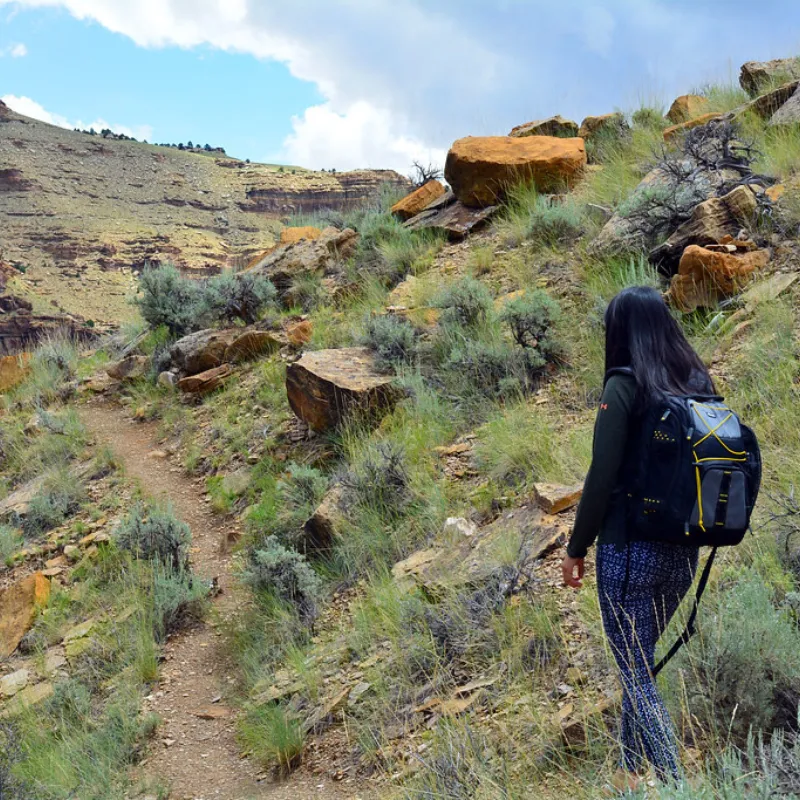
- Safety Hazards: Without a guide, you may encounter dangerous wildlife or hazardous terrains without knowing how to respond appropriately.
- Getting Lost: Navigating unfamiliar areas can lead to getting lost, especially in dense forests or remote locations.
- Lack of Knowledge: Without expert guidance, you might misinterpret wildlife behaviors or miss critical information about the animals and their habitats.
- Environmental Impact: Uninformed actions can disturb wildlife or damage their habitats, leading to negative environmental impacts.
- Emergency Situations: In case of accidents or sudden health issues, you may lack immediate assistance or know-how to handle emergencies effectively.
Conclusion
Guided wildlife-watching tours offer a unique and enriching way to experience nature. They provide expert guidance, increased safety, and access to exclusive viewing spots, enhancing your understanding and appreciation of wildlife.
By carefully considering your interests, tour options, and logistical needs, you can select the right tour that aligns with your preferences. Whether you seek the thrill of a safari or the tranquility of bird watching, guided tours ensure a memorable and responsible wildlife-watching adventure.


